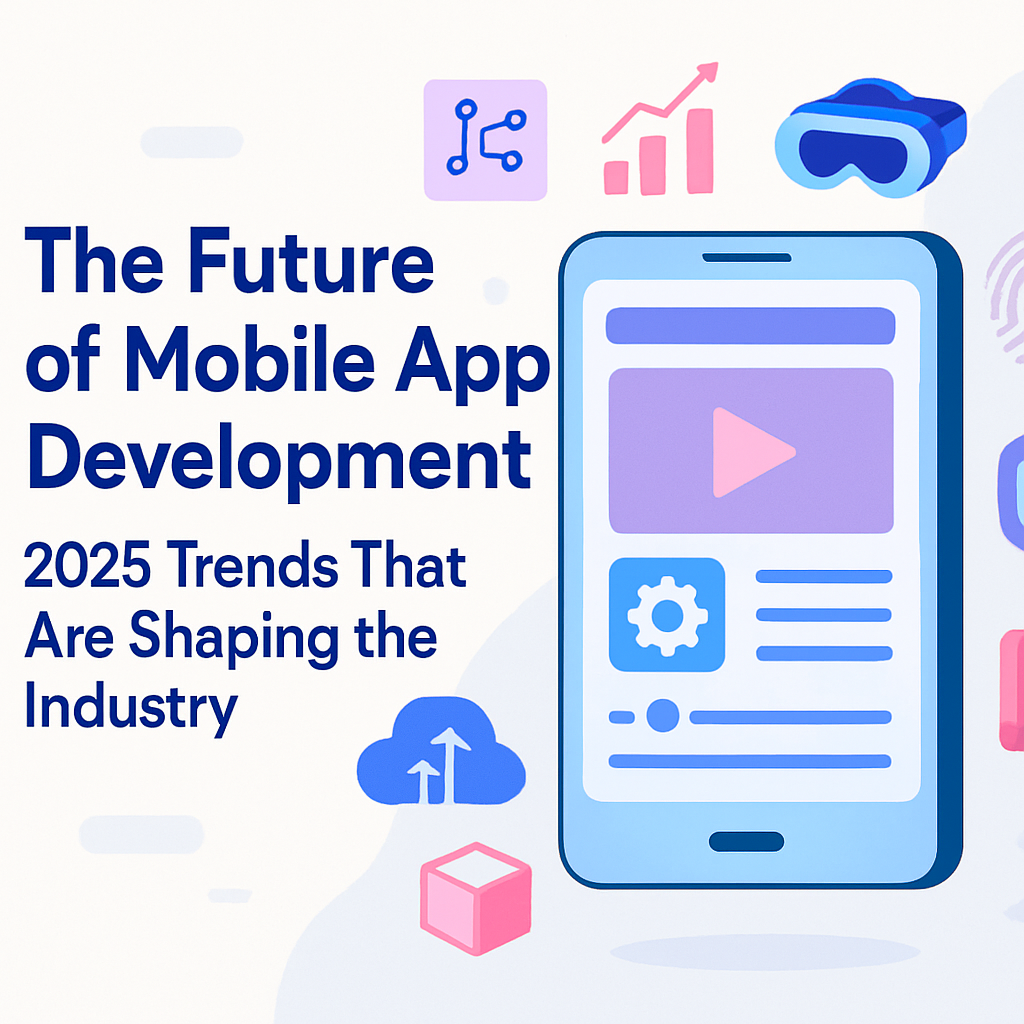Mobile app development is no longer just about building a useful tool—it’s about crafting personalized, intelligent, secure, and immersive digital experiences. As we move through 2025, developers and businesses must stay ahead of rapidly evolving trends to remain competitive in the app economy.
In this comprehensive guide, we’ll explore the top 20 mobile app development trends defining the future of this dynamic industry, and why embracing these innovations is essential for sustainable growth and user engagement.
1. 5G Technology Is Supercharging Mobile Apps
The global rollout of 5G is redefining what’s possible in mobile development. With blazing-fast speeds (up to 100x faster than 4G) and ultra-low latency, developers can create richer, more responsive experiences—particularly in AR/VR, gaming, and IoT.
Why it matters: 5G opens doors for real-time streaming, instant cloud syncing, and even remote surgeries via connected mobile platforms.
2. Cross-Platform Development Dominates
Frameworks like Flutter and React Native allow developers to write one codebase for both iOS and Android, saving time and reducing costs.
Trend driver: The push for speed-to-market and platform parity makes cross-platform development an industry standard, not a shortcut.
3. Augmented Reality (AR) & Virtual Reality (VR) Integration
From IKEA’s furniture placement app to virtual campus tours, AR and VR are revolutionizing education, real estate, gaming, and healthcare.
Pro tip: Explore SDKs like ARKit (Apple) and ARCore (Google) to get started.
4. Artificial Intelligence & Machine Learning
AI powers everything from smart recommendations (like Netflix or Spotify) to predictive keyboards and facial recognition. In mobile apps, machine learning models are enabling advanced features like sentiment analysis, fraud detection, and image classification.
Real-world use: Chatbots, such as Google’s Dialogflow, are streamlining customer service in countless apps.
5. Edge Computing for Real-Time Processing
Edge computing means data is processed on the device or near the source—ideal for applications requiring low latency, like AR games, autonomous vehicles, or remote monitoring.
Learn more: Edge computing explained by IBM
6. The Rise of Internet of Things (IoT) Apps
IoT-connected apps control everything from smart thermostats and lighting to fitness trackers and factory equipment. Statista predicts 30 billion connected devices by 2030.
Tip: Explore tools like Blynk or ThingsBoard for IoT mobile app development.
7. Progressive Web Apps (PWAs) Gaining Ground
PWAs behave like native apps but are delivered via the web. They offer faster loading times, offline access, and easier updates—ideal for content-heavy platforms.
Example: Twitter’s PWA, Twitter Lite, uses 70% less data and loads in under 3 seconds on 2G.
8. Voice User Interfaces (VUI)
Voice-activated assistants like Google Assistant and Amazon Alexa are pushing mobile developers to integrate voice as a primary interface.
Use cases: Hands-free shopping, dictation, scheduling, or controlling smart devices.
9. Biometric Authentication Becomes Standard
From unlocking your device to authorizing transactions, biometric security (fingerprint, facial, and voice recognition) enhances UX and data protection.
Security insight: According to MarketsandMarkets, the mobile biometrics market is expected to surpass $70 billion by 2025.
10. Cybersecurity Is Non-Negotiable
Data breaches and cyberattacks are on the rise. Developers must embed encryption, multi-factor authentication, secure APIs, and conduct regular security audits.
Get started: OWASP Mobile Top 10 Security Risks
11. Gamification Boosts Engagement
Apps in finance, education, and fitness are using gamification (badges, rewards, challenges) to improve retention.
Example: Duolingo uses streaks and points to motivate language learners. Explore tools like Gameball for gamifying apps.
12. Blockchain and Decentralized Apps (DApps)
Blockchain ensures data integrity and transparency. It’s ideal for mobile apps in finance, health records, voting, and supply chain.
Learn more: Ethereum for developers
13. Hyper-Personalization Through Data
Using AI and analytics, developers can personalize everything—notifications, content, UI layout—based on user behavior.
Tools to try: Firebase Predictions, Segment
14. Green Tech & Sustainable Development
More users prefer eco-conscious apps. Developers are now optimizing battery consumption, reducing data usage, and adopting cleaner code practices.
Why it matters: Green software foundation is helping developers build sustainable digital products.
15. Inclusive and Accessible Design
Apps should serve everyone, regardless of ability. Features like screen readers, voice navigation, and high-contrast interfaces are becoming mandatory.
Read more: Web Content Accessibility Guidelines (WCAG)
16. Smart Monetization Strategies
Developers are exploring creative revenue streams:
-
In-App Purchases
-
Subscription Models (like Spotify)
-
Freemium (free basic with premium add-ons)
-
Ad-Based Monetization using platforms like Google AdMob
-
Affiliate Marketing
17. Rapid App Development (RAD) Tools
RAD platforms like OutSystems and Mendix enable faster prototyping and deployment through visual development environments.
Ideal for: Startups looking to validate MVPs quickly.
18. Advanced App Analytics
Tracking user actions, screen flow, and churn rate is key to improving app UX.
Use these tools: Mixpanel, Firebase Analytics, Amplitude
19. App Store Optimization (ASO)
To rise above millions of apps, developers must optimize titles, keywords, visuals, and reviews.
20. Legal and Privacy Compliance
Regulations like GDPR and CCPA require developers to be transparent about data collection and usage.
Checklist: Include user consent prompts, privacy policies, and data deletion options.
Conclusion
As we advance further into 2025, mobile app development is defined by innovation, personalization, speed, and responsibility. Developers who adapt to these trends will be best positioned to build high-performing, sustainable, and impactful mobile applications.
Whether you’re a business leader or a developer, embracing these shifts will not only future-proof your mobile strategy but also elevate user satisfaction and trust in an increasingly connected world.


